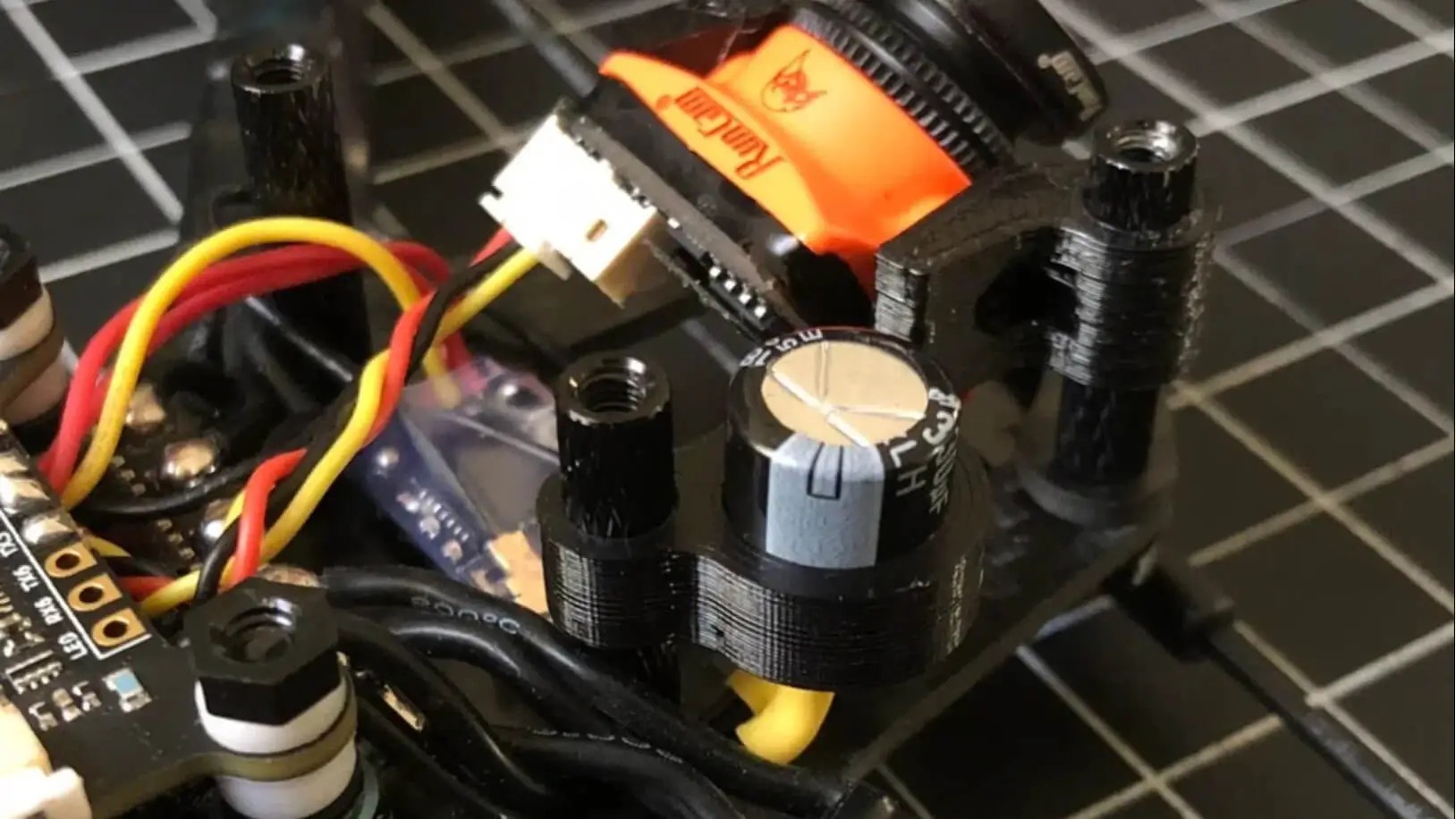
Voltage spikes, electrical noise, and sudden current surges are all part of the harsh electrical environment inside a high-performance quad. Without proper mitigation, these can lead to everything from minor video noise to catastrophic failure of your ESCs or flight controller.
Voltage Spikes and ESC Protection
Brushless motors demand rapid bursts of current, especially during aggressive throttle changes. This causes voltage spikes that can momentarily exceed safe limits for your electronics. A well-placed capacitor acts as a buffer, absorbing these spikes and preventing them from reaching and damaging sensitive components. While some ESCs include built-in protection, they're often insufficient for high-power setups running 6S or high-kV motors.
A 1000µF 35V low-ESR capacitor is a common go-to because it provides a strong reservoir of charge to smooth out fluctuations, and the 35V rating ensures it can handle the peak voltages of a 6S system (which can momentarily exceed 30V under load). Lower-rated caps (e.g., 25V) might work for 4S, but they offer little headroom and risk failure over time.
Filtering Electrical Noise for a Cleaner Video Feed
FPV systems are highly susceptible to electrical noise, which manifests as static, rolling lines, or distortion in your video feed. This noise is often generated by ESCs switching rapidly on and off, creating high-frequency interference that can leak into your VTX or camera power supply.
Low-ESR capacitors excel at filtering out this noise by providing a stable voltage supply. Placing one directly across the main battery pads on your ESC or flight controller significantly reduces interference, leading to a cleaner video feed with minimal artifacts.
Why Low-ESR Matters
ESR (Equivalent Series Resistance) is a key factor in capacitor effectiveness. A high-ESR capacitor resists rapid charge and discharge cycles, making it less effective at filtering noise and absorbing spikes. Low-ESR capacitors, typically rated for switching power supplies, allow quick response to electrical fluctuations, making them ideal for FPV applications.
Recommended Capacitor Specifications:
Placement Matters
For best results, capacitors should be soldered as close to the source of the voltage spikes as possible—typically across the main power leads on the ESC or flight controller. Additional smaller capacitors (e.g., 470µF or 330µF) can be added closer to specific components like the VTX if needed, but a single 1000µF cap on the main power rail is often enough for most builds.
Installation Locations (in order of priority):
- Primary: Main power pads on ESC or flight controller
- Secondary: VTX power input (if video noise persists)
- Tertiary: Camera power rail (for extremely sensitive setups)
Final Thoughts
Skipping a capacitor might not kill your quad immediately, but over time, unfiltered voltage spikes can degrade components, causing random desyncs, burnt ESCs, or a fried flight controller. For the price of a single prop set, you can add a simple yet highly effective layer of protection to your build. Whether you're flying 4S, 6S, or even higher, a well-chosen capacitor is a must-have for any serious FPV pilot.
Cost
$2-5 for a quality capacitor
Protection
$50-200+ in potential component damage